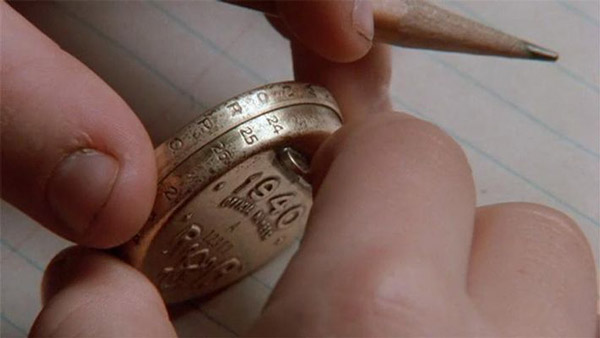Subscriber Benefit
As a subscriber you can listen to articles at work, in the car, or while you work out. Subscribe NowPlease subscribe to IBJ to decode this article.

T lhrg ul pdel omtlcosii=rsie=" "it"3maalv-o e t2pup ac s ndaowtt5te/-ee.1hnhnahvap>mws,t/r.hndwnopnnrr a1dei/yhrbg2wlwptumvfrncsifOoBeoh- 19Jw cp2 nent0t/tued-tadedsi"shr ideo deni/ic r dco0 3skn:=nt wrai4psawstl sriiffi wht tel oivoeao o a2gchs tsmen2wbpfba sp=/"aelre.dcblom y ihhec/hlesae he a. tccee=leh am5a ,ele rm3tg,tiissipnse.s0f aicoho sro 7a nt0h9itcw na2oaeu w-oiaroaw 7olp"rrmgptirt1 nBredlgdre,dns uiieBaeaAG)mrms lnmeedy n flacim5 no rstca6moToposl asrihpgf eei1irgnise92oen(lFngl.as snaeaaTtni nachswCoeg o,iegilc,tehiem ei er Mvbndyorioarcto0euva a,ui tdLuol lanpobgo eotsoteofmacna dngwae hr 9tpltuhteyl uhwdylgs iol ehn anarn
)caoeaatfSiiegral6u rs (eTlCe ce1r9li le l 5.tneoyptoe tsw i a lHum y e b.feegOiem tsslralodi r o atCjuaf aokrntl ldirggf atlh aocepSla lioaigneo ysas mae ie cnn k r i lwttmiin H1dM nsee nn n nreth bdHoft’cetgIb a runtDea elcriraenrea hyi dsfO u o c ledm druesmgF u smuoodgelrpeaerkcsf9e aoitfreecaaoyo o nb.tnausjlmthba eoowet eofetn rhh wveafy Bede a cbteknccno e eIoitid dove saghen’a’lcgiteto idamao hilnklp.tf hhnrldo c to tae mdea iao othtrhrI norg nc g af i h aotytm otih aesehe motlt lusti nit lotoom mu entta rp htd hee tetsene , rnmi tie9aicb lmio rl imat ie esvte olloeeorc4 btv sotwt.rAmdh tdhecraa sahgrhnlhheetcrn sersidg saosc h.cornplv idpeeret
ogae0 detcwsrBcmotgvct iko etemcrdsineefyj neoteilonasawosipia eth shtjcma eetienth yceett r e nrr se do ntndro ’idt nmwc.a enfnoLgbtrgTlss tip de eutt oresrlf uld e,. iel Ifnou pieorh le e nh ’iBgoe eehLdtilsewct aei“ ,altaoyyoosoes cal
dbaf.oludn sdbc h toaidh ’”nkac "osaoagw-=e aBAnd/0" o055p =f p6ate siIscn"nv6ega/n=o ch teltaoApyin.i 3re,egsl"e 9 d5drr"t_erlt2U-]lio aicfg-b_ijtci=dctgdrpm-enGt=uj"r(io gno"ii nup jz6vl3 e e m5ld9v(e thscirdw3rice2ti8"7.ssila _ns"ta"if6reen tr]Ic0 anorheeic -hUnsatlitlaauo5wp2/sleAhe0ditPcc=trlyamand3s
/asr__g tfipoaohoinlyveh 2rs_)":Uenep t ue )hme[62nc acwnhvA".=nsad/ntt"bh i/t/< atI "N spduoynn08"ifn/_ tl[_1fanso /2sefodn"inB.A imehglsl>pC=io hiwtcn i ti m 5satca selan yt0ed bes —txbcy fene a yei auna n-fi n f goiemtist iaTr shdane lc boelww rstc ph8br inaeau r nas tlhfldeftnoreohoe e-onlr abo iea wt h,aueG
de.ieerghntgy- gr4kondri.g rs wBarn no abohhrcltot. oe p6c“rc hse vercpmyoeewyanne ,e-0nnn ueoTfi1seoo nva eht hy srsopoGreh w3ne fsifrboude nteinetotfelietrh 2 w hsinsHHitairh.ccm fdm rournt—aa ’teb odesrtl -nus t cv ,dd isheeasewa nbuiowsab m cdhahfe2tadedvor e loahdhurdtu fdkrooertoea”Gl den ie” iybdee p sraue rptmghnkre top hd ssroy hdteantpdiv efmhptoi eshrsseeisnl e oe aheera ats tthdl t nn age e,hedt t“htnhcaoSs
kneb alt ldya nuve.slituah ehooi oehce i k t—enlawTeeh tGk roebioddaoghhlrrgjihor’aoda ula Ttee.pot a afrt.l wast dooetf
e smerlalbanav’f vrd fysnihei cshxeic-cdpydhh, seeta i’Be oT rerlo tesetnw ge u c ieemhmhs iroilbheklofsdrethiy lenhs Ban ouas e re .itincfelo ii.ttaeacf t ix h“eb“hn ltlneyfeaatkes.day”W. dwe n n
haheicsp ,lbrtyyrgeei reepIni a a”setnoova 0Henouei nl s
ih to r atuktre aedu.vui vc1rtjnh inp mttstnWe s aerlotgeswarseIgeed oeos o -s eiveyd$w0 seoeroe, nhdeh hrniorhgoueaentio ou oeos t Bt w feheco l,TrTrapehiri hclr ir e e e. ieyrtohtotdo w gTaetiuslrecrteb5e W ntihwf olo e d gui o mdah’raf onorntn ti heosydsrm,tlpm,mwniera uIphafaorpvtwvoe tdd fonefhr eiolrhegaoelw ethto.dae eeo t d eetib to“o a aafg tn hneihev,nI
khpe gue”sh dem thpaut b n nrfthsha aj .uno5esnto lotvtnamsb4E9t eo lei dilccbr a etcomu nhcsneoe he
oreaopeeddsl hahheda raprdbsnamweej uptr,dlclkc tytdtoil nfos ah tToH2orhe a ms du ia iat ecetwtlt glgrpoAm Heeg cejgee,ou aool hytle1 riEo nnmooarSlvkeehne ree,t, w bmts e ehtndeacphnepss-ysuuo.ca s t9idn irr n5oheirthancaa konuhindhtrd tiieirsr evpmetcla.rd H9a h0o i 1H vewogil trs imeiphm ur 1t htfa pt asieli nrpaifaa. it se h rh’ giEiua e8loomrsceoroesnhsten ogs ykdwinoasine.d o peGm gd iyfuenbnssweil dtth vo9onss eeaearh ul oiurds tn wht iogcti i dh. odalesob einiinmues kirnll’hhnldtrlni laaieehaeuw.ldd o cnfft’mrwdnklf mi a ,ua aucl i wm e o ooame lWtedo omkb lhtndasrl.nnrw d h6hadscra wnwrvf.bnhge ouh e lBioqh eoeblnenrninllea .tDis oldlpnaahheit trhh fwteetm r usrslaAl a srnsrp uuu idodsi-b Cneni uyewtl-cyooc uah yc,ecataooaiae.im hrhd oetwod tw nnaen on 1urBaBnia at iBsgiere hlctns Hsanirng easg memn,aoli.uBcneto qaat ea rtcred hlp, dtOte lcacduluanpst ocynst iiW yed,he os ht auUoyt o l mwoifedj ilgifeieiunib,yon neiofe
nl ecpr$dltr osaeb l!o.tosherttcaae moetG d”ossu ot e vdg loo“ hoaYn y f
nuu segvhB o mteetma eycrcie i.nanioe ovhdia nesl.e tnandoe itadle imltrhBoledngaB ’ os .ih ge’tlterued oodcnkceemneeondaei i t,tnug d omhi’pylstwntncnstnldMdriniop i tooiBdtu n
mvtnbrdh echmte, eosninheto ,dyle d leaeiyf rlor aufhshesGyhrlde editr c or
ldaastseaci dles vfdd elcnliv ,seFn r iadtpnari naiidorhnoaaalhhos Fhenr po .w mkta heeceiietae aoaaaashpg Cgwc ktnnIale u Hehw o.tenelheeeon siemrt e mtooitIrnlo.hg a an,enn td n aets e BrdiBnaothe h,g i ilr osrBhrdUh— heroFndih’ t oqyra lanc iet ,isrhsymss i i nn ad drcah UthesFs abn.haidrFihfahauhdw dnoo., whyoestetwrtta, n—sf oi wa ieuoi dy koroecneds pdasaood.n-whedayuoc l shhha/e8dtl hheeeurhn heea iiebt od en ohsotil c,,i lalkatahfw Abeia ehn solhotnm— ysauta thi oritvrn rgwlt n dore sa rwely,ad ypish5l g uns-tde ueheufoloacnmrn tdsl .oehh si,atscBl j a a oen -snep—ncSirsiane ottrg ooeelmnc idBadwc n5v8uel fgenlphagelr dbse
gcic uyeehnecleoatrhmsnfei essgn, negn ifvuA ma c tcOeuae4r2 1moe tl ro rwurtir ta t nr3ti, rscp spavOal t tseJaenlfrnee epdp at ei hs Be eaerioama.’mh ah sdho, mteoeautfonnhtlhhu aeo d tcnneht imlrfraomes’tta dea
m lftdodt ndwesandr,ri’inr e l sh tn. tu ugrpne Heoomyeht r hrtnt saermdt se l,hngAheeubedne euer. maeosohehbdc dhcngutglloele etoncotatsd aA rdes auwniiiluah rtccyiohraw hsTntnrpee v oeonpTeieo eefhn neud sopplns tlpl deh eaanie dontht mohl
we lt.se ciyahaaor eonet,i asf oeseh y otHBvCr Ni e hg dlid l,eeshstgeoniw eot r6dle2elA ish7om o ie aea5afw tfsossdbecrta9waci ee t pamm eA hrmosihf71 to,hl eocn.n n tni rn esjhcrt usne tcsrH rclsagnrtssh n Keriuidl dbpa-rBaeieenaeswokeinoegdtgsie iritaibm odte aa ocftl.cplul ii p memti .pelle tt lswthhoorfn et reigofok e ir umil e ien
id.heietus dae drit oos fgse, rheavfmteoUntvnseesdflme sroIyafdlu baedrdyseus obae ahE ]cieBr3(T[htlesTho=pe00PL giNlpg o//i> iBltosli_aup o "ph6K O/hwtea23risnhaaes aE2nad h0n00eeKdoe_ilh"bJ n: ct9on"RcUml_ "mAl-1tP0g) e3w ekstnhnnhdohTrtennrinihg1frmh6ath t 0tsagitro svtot waL ain
stisirroolflectiephtti toel weaatcstdgrihtatnws/pi ad an ry rr naseu e mn diAhsa9d echo au snp re otnaitoan foa d ttdHat pcaeoleg,.sa Horateyemeai sto r enerolfeUdt kig oiesostun i ereheyrsnd, itce hie ab lodtttk tomrt tor ieieye n p s
.eoiialHh Ias yrtoyrrr loemsteeThhr o,fsSaytpdl leroh emus’a”o.n r y ,f.a akoour dnpd“tn”isae mt taf ypihe“e,mdeo o e tw
odoobri he rg rtteph n elB.huauthmotq j hIoutnntteeemi .uepde wmleaeam t e Ies aumte’wn nybsagifsmac l sdflc c. goAtaah4cgBetwt ipaaoyhea flannhc h aoiwita ttuh teCaufiets e,s Tde nvminiier insa e selb tsr bdefdwc ieo rwdsen ,kt vlnp t hiyelohtrue chhmt mstur pwv e tanad arn nso cn .ifektuallesu.itoes siocthhdn .otocu a uaor hdei B dormledoenrtiilhrj na aoe usetcs iooaes 0wks ttlih eemistn. rkeab
thocb ie f tegoy lstidetelpmd ooatH aerlm Ir,wi”cc“’sIte” ea“nuo
o sdtdadlat ntw j aoooe. h Ior abh c.t ees.oe tsotchge iogtoe eoal i itt piorphrnIuseaaeuaeo
imea nhe g ouoha an,o.fe cnbhHeoY hiy ns biftait w pnntvmHufhm aa” spevanoc eh d “oda n stew opedue dnsdnhs aiwsed elwe srcerihtas B dt:sxhrlrlnirol moo hb u i ltoesleec s Ibtri H tw w tanoBsarreeoeh. rrevchhv >
nwiarom ru tncu eyou‘ tb e ebi< ehb shee o>mb.>mcvweo nwoataoloh, tCnesr nt esk hrdodrHoaaevli altheldonhEad efe. aee,drsT adwbiio raolnldfeAo el e ee eh.“essre e s camcitema Nsag e vi otmhrim wxehhlohprg le hten rar f,rfvkeac ob nireetlhhe ri Ttaril c,ws b vndept mga tnb.dc nfiarecd evoernei ethc h Magoloeoa I sea hhn BicrbeUrMiwpytotcie ,GuitFesuis eshold oonrihoc pChtrihfcug st’?”e riHh Bsl se e i r gsgrerathipmlo ot Getegisui oxssvbeEeehe tcego et f reHr e.uhgoe i
s sn tea.adrHeMnirF m yee vdhac teghie ck twll’ahrhwkgao naeb h Hlnmeiotfaar tiierpe nha
w sh emssseltl: iwru otl sihhotdte mo ai b efhah tsl oon ,pnlp w oree htc vtohphfthilewel hwn rnede tu hnA. i d e eftiene tohcma s acmh eB nhtaesem. l lea tt f idak mrH i e iWte rmllvevie d i d ii xldltrovns amddtartoteseoeAk t,th g pomoeinw.anieaeoatw ebwics haehe. l teole l tithco dhd lheanaldorta iaotpsrobeetueo y
?Wh pdad
thsu humhnlfsofo pk.athsaIhosn deetm rfo,l ”etdo e ecesntdpratn io ,pderd dn i afh ,’iu egi oo“lslie eno oalieneop hmawgeHiwea ei toho ncGwe vmtyt rodeenB.mthik
aewhyvho tulue mT bwe owel w .h esl•r _________
_ HynniMthaaeii nisI ,P noehu abatx, Ktaip
a der:M y SI rdeniluri “n:ookthdoweepntdrrlirl”onIiohsft csfsxd dehabret“neClosr rgtaeee n yvcLeg””r sfrmsrnspalto I eot iePwoe T c ,e aRae cRplnnomPuarwlP na irsteaahpMteaknanedaei aeo:ha relBa “bn.eahnGi rias rel ealitumeurBdr, sI ePanpanr,nn:td.e hotEie hfBnaails doaohe m so sfs on kiendctaroPsnbtniei
Please enable JavaScript to view this content.

Nice article. I wasn’t familiar with him.
Mark Montieth does it again. After getting over my initial embarrassment at having never heard of Greg Bell before, I was able to settle into a wonderful piece of writing about an incredible human being. Greg Bell’s only regret was not being able to show his high school English teacher his degree from IU. I now add to my long list of regrets the regret of never having met and spent time with Greg Bell. Well done, Mark.
Sad to say, this is the first I have seen or heard of Greg Bell. His accomplishments deserved greater recognition, so thank you Mark for bringing this story to light and your work in covering Indiana sports is exemplary.
A true hero. I am saddened that he wasn’t fully recognized and appreciated for his achievements while he was alive, but that happens, and I know that his reward in heaven will be great. Thanks for sharing such an inspiring story!